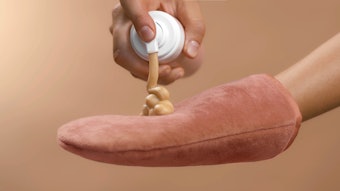
Some clients might not realize how the sun can damage their skin in the winter. Over the last decade, Vincent Hubiche, personal care application lab manager, at Gattefossé SAS focused on leading the field of sensory analysis in skin care. He shared his insights on the significance of wearing sunscreen during colder weather or days less sunny, a message you can deliver to clients.
Skin Inc.: Why are clients advised to wear sunscreen every day?
Vincent Hubiche: In the past, people used sunscreens to protect themselves from the visible damage caused by UV rays—i.e., sunburn. Sunscreens were, therefore, used principally on the beach or during summer vacation.
Today, it is well-known that the invisible effects of UV can be even more damaging, in particular UVA rays, which are the main culprit of skin aging and one of the factors leading to skin cancer.
It is also estimated that 80% of the signs of skin aging are due to UV rays, so the use of a sunscreen every day will help to protect the skin from premature aging and preserve its beauty.
[As an aside], even if exposure to the sun is limited during the day, it is known that recurrent, small exposures are enough to generate skin aging. These cumulative, negative effects of UV rays impact the sun’s direct effect of our skin.
SI: If clients stay inside and avoid the sun, should they still wear sunscreen?
VH: If people are not going outside, it is not mandatory for them to use UV protection. However, they must take care, because if they are often near windows, about half of the sun’s UVA radiation can pass through them, and in doing so, the UVA reaches their skin.
It’s the same case in a car—we are not correctly protected. Many of us have seen the picture of a U.S. truck driver, published in the 2012 New England Journal of Medicine, showing the effects of [regular driving] and sun exposure to the left side of his face.
It is also very difficult to completely avoid the sun even if protection, such as hats and umbrellas, are used. In this case, UV rays can reach the skin, especially on the face and hands, which are over-exposed.
SI: Are there special sunscreen considerations for cold or winter months, or as the weather changes?
VH: The cold does not protect the skin from UV light. Some even consider the sun to be more dangerous under these conditions, as the warning signs of heat on the skin are absent, so we do not have the reflex to cover our skin. Many consumers also stop using sunscreen once the summer is over, which is likely to have negative consequences on their skin.
A particular example is on a winter holiday in the mountains, because at higher altitudes, there is less atmosphere to filter the UV rays. And with snow, the skin will absorb both the direct UV rays from the sun and the diffuse UV rays reflected off the snow. So consumers may burn in unusual areas like the underside of their chin or ears.
SI: Is there a difference in how much sunscreen should be applied under different weather conditions?
VH: As a rule of thumb, the more sunny the weather, the more sunscreen that should be applied and re-applied during the day. In cold weather, it is important for consumers to protect their face and hands, as both areas are over-exposed and subject to permanent UV-induced hyperpigmentation. In the summer, it is important to protect all areas of the body not covered by clothes.
UV light also penetrates cloud cover with little difficulty; about 80% of UV rays penetrate the clouds. So even when the sun is not visible, some protection is needed on the skin.
SI: How does climate influence skin care? And has the need for sun protection changed over the years, with climate change?
VH: Climate influences both the state of skin and its needs. In humid and warm climates, the skin is more hydrated and needs lighter skin care. In colder, drier climates, the skin is much drier. Indoor heating also significantly dries out the inside air, with humidity levels in homes and offices below 30-40%RH. In such conditions, skin rapidly becomes dehydrated and richer, more emollient skin care is necessary to protect it.
Climate also influences the perception of skin care by the user. Take texture, for example. When it is warm and humid, skin creams are perceived as being more oily and film-forming than the same creams under normal test conditions. This explains why, in humid countries such as Brazil, there is net preference for ultra-light, low film-forming skin care.
For SPF products with higher concentrations of UV filters, the perception of oiliness and tackiness are even higher, and this can lead to consumers using less sunscreen or even avoiding it altogether. Yet it is just as important to protect the skin under these conditions.
With climate change, not only is the temperature of the planet increasing, but also the humidity. So to answer to your question, it is not really the need for sun protection that is changing but the need for sunscreens to better adapt to new climatic conditions. Other factors, such as pollution, are also known to directly and indirectly impact skin, leading to skin aging, inflammatory or allergic conditions. When combined with UV rays, these effects could be emphasized.
To learn more of Hubiche’s insight on sunscreen protection, proper application, climate influence and more, visit the Cosmetics & Toiletries website.










